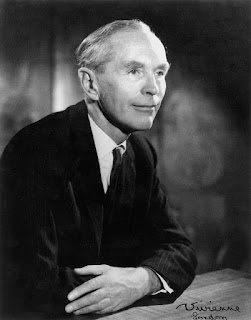Mastermind question. What have a world champion racing driver, an 18th century philosopher, and Munich 1938 in common with two Lincolnshire hostelries? Clue – the Scottish Borders. The pubs are the Hume Arms in Torksey and at South Kyme in the fens near Sleaford.
(Neville Chamberlain)
Lord Dunglass was a young parliamentary private secretary when he accompanied Prime Minister Neville Chamberlain to Munich on his mission to avert war in 1938. The piece of paper Chamberlain waved to crowds on his return proclaimed that Hitler had no more territorial ambitions in Europe. Alas, it did no more than buy another year’s preparations for the war which, even then, was inevitable. It gave a year’s grace, time to build government so-called “shadow” factories in which Rolls-Royce would build Merlin aero engines, and Vickers-Supermarine Spitfires.
Dunglass’s title was a courtesy one. He was not entitled yet to sit in the House of Lords, but was able to stand for the Commons. The family had a long record of public service; his great grandfather was under-secretary at the Foreign Office in Wellington’s 1828-1830 government and Dunglass seemed destined for something the same until his parliamentary career was unexpectedly interrupted. When he volunteered for army service at the outbreak of war a medical examination revealed spinal tuberculosis. This consigned him to two years’ treatment, a lot of it spent in a plaster cast. His return to the Commons as MP for Lanark, and later Perth and Kinross, led to distinctions that included acting as Foreign Secretary during the Cuban missile crisis of October 1962.
(Douglas-Home)
Renouncing his family Earldom, Dunglass become plain Sir Alec Douglas-Home and in December 1963, following Harold Macmillan’s resignation, succeeded him as prime minister. Taunted by Labour leader Harold Wilson for being an aristocrat and the 14th Earl of Home, Douglas-Home dismissed the inverted snobbery with “I suppose Mr Wilson, when you come to think of it, is the 14th Mr Wilson.” Describing Wilson as “a slick salesman of synthetic science”, Douglas-Home derided Labour as, “the only relic of class consciousness in Britain”. His opponents retreated, saying that, “The Labour Party is not interested in the fact that the new Prime Minister inherited a fourteenth Earldom – he cannot help his antecedents any more than the rest of us.”(the 14th Mr Wilson)
Alexander "Alec" Frederick Douglas-Home, Baron Home of the Hirsel (2 July 1903 – 9 October 1995) died at the family seat near Coldstream in the Scottish borders, not far from Chirnside, near Berwick-on-Tweed. It was here that the Scottish philosopher, historian economist and essayist David Hume (1711-1776) had grown up.(David Hume)
Hume was important in the period known as the Scottish Enlightenment. His father Joseph Home, an Edinburgh lawyer was a scion of the same Home and Douglas-Home dynasties that held six Baronetcies dating back to 1638. In 1734 David altered the spelling of his name and from the family home of Ninewells, Chirnside between 1754 and 1762 embarked on a writing career that included a 6-volume History of England, “From the Invasion of Julius Caesar to the Revolution in 1688”. A wide-ranging work inspired by Voltaire, it covered more than kings, parliaments and battles and included a study of literature and science, noting the work of Francis Bacon, Robert Boyle and Isaac Newton. It contended that England had achieved “the most entire system of liberty that was ever known amongst mankind.”
At heart a Royalist, David Hume thought revolutions quite unnecessary, which led to his History being regarded as essentially Tory, emphasising religious differences more than constitutional issues. He was anti-Presbyterian, anti-Puritan, anti-Whig, and his portrait feature on the gable of the Hume Arms in Torksey is probably a cameo profile from an engraving in one of his major works.(It could be mistaken for Adam Smith (1723-1790), (below) another notable figure of the Scottish Enlightenment, moral philosopher and political economist.) That David Hume was not, however, directly connected to Torksey. This was more correctly Sir Abraham Hume, whose grandfather Robert Hume (1662-1732) of North Berwick in Scotland was yet another scion of the Home-Hume-Douglas dynasty. There were two Sir Abraham Humes, one 1703-1772, the second 1748-1838, and their property in Lincolnshire included Torksey, a manor belonging to Sir Jermyn Davers until disposed of to The Duke of Newcastle who, in turn sold it to Sir Abraham in 1748.
Enter John Cust (1779-1853), 2nd Baron and (from 1815) 1st Earl Brownlow. In 1810 he married Sophia, daughter and co-heir of the second Sir Abraham Hume. This brought Cust not only Torksey and South Kyme, where there is the other Hume Arms, but also under the will of her uncle the 7th Earl of Bridgewater, a lot of the Ellesmere estate in Shropshire, the Ashridge estate in Hertfordshire, Buckinghamshire and Bedfordshire, and properties in County Durham and the North Riding of Yorkshire. So, it seems, the arms of the Hume family were spread wide. The world champion racing driver? The connection is Chirnside (pop 1300), 9 miles west of Berwick-upon-Tweed and 6 miles east of Duns. Its name was said to be derived from a cairn on nearby Harelaw Hill. South of the Lammermuirs and north of the Cheviots it was the home of Jim Clark (1936-1968), who won the world drivers’ championship in 1963 and 1965. Born at Kilmany in the Kingdom of Fife, the Clark family moved to Edington Mains farm at Chirnside in 1942 when Jim was six.
Here he graduated from farm tractors to his father’s Sunbeam Mark III, started racing in his friend Ian Scott Watson’s Porsche and Lotus, before joining Team Lotus in Formula 1. One of the greatest drivers of all time, Clark set records in his eight year career that have only recently been broken by virtue of the proliferation of grands prix.
Amazon ebook Jim Clark, Tribute to a Champion










No comments:
Post a Comment